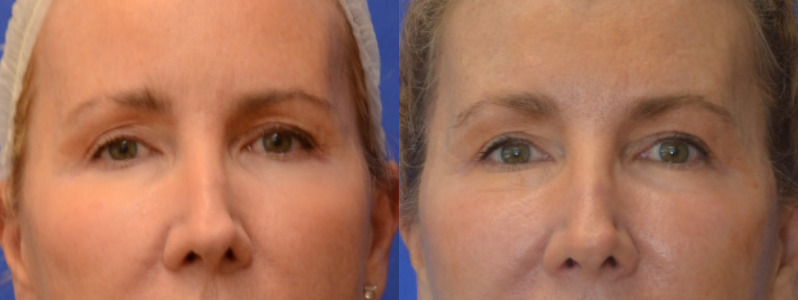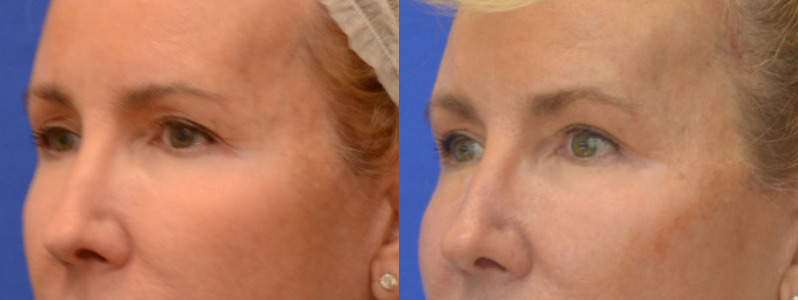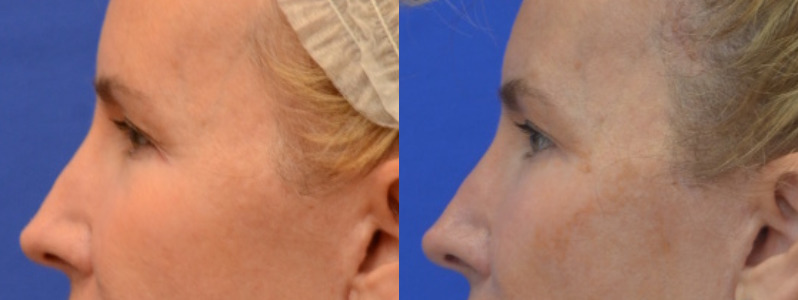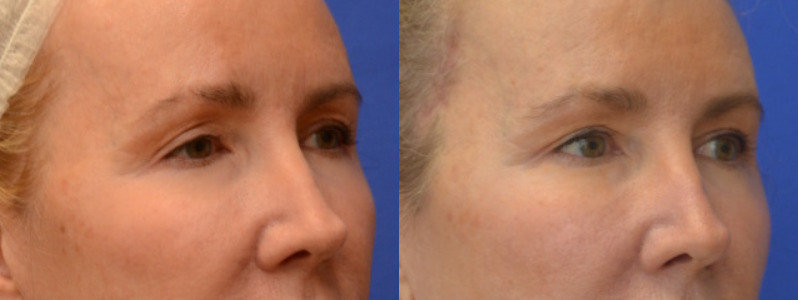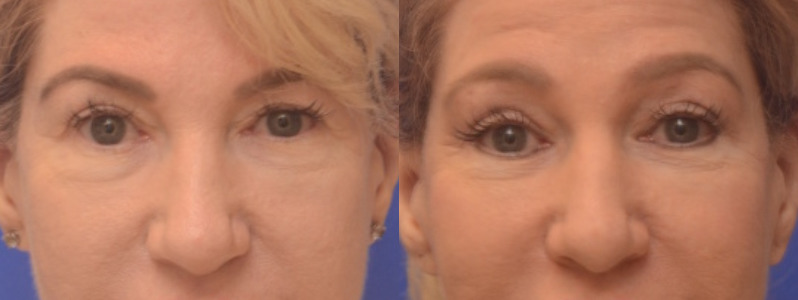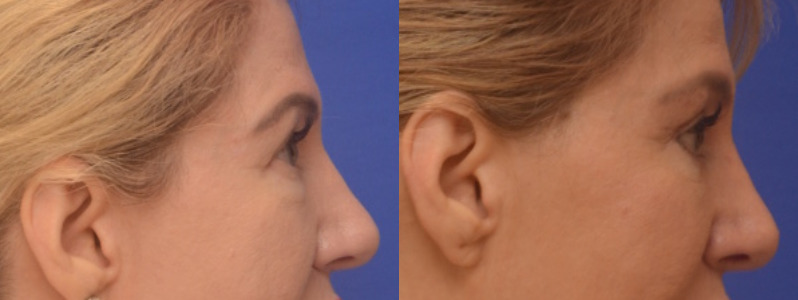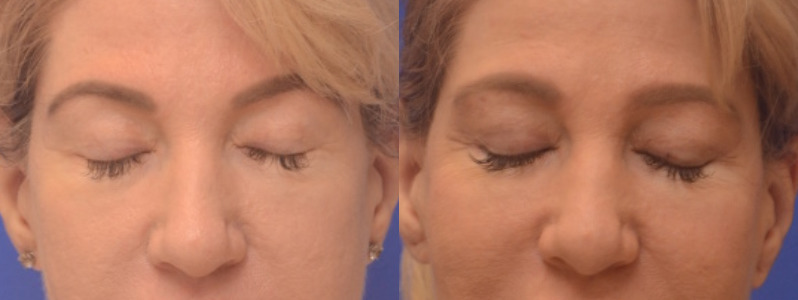Eyelid Surgery
Tighten loose skin around the eyes for a refreshed appearance
Your eyes are the windows to the soul, and the source of our expression, telling others how we feel, what we are thinking, and if we’re happy or sad. Sagging, droopy, or baggy eyelids can make a healthy person look tired and older. Today, however, by performing a relatively safe and common surgical procedure, experienced surgeons can remove excess fat and skin around the upper or lower eyes and help patients achieve a more refreshed and youthful look. The skin around the eyes, which is the thinnest on the body, succumbs quickly to the ravages of time, sun exposure, and lifestyle. With age, the eyelids stretch, muscles weaken, and excess fat accumulates over and under the eyelids. The results are eyebrows that sag, upper lids that droop, and a bagginess below the eyes that robs us of our energetic, youthful look.
What is Eyelid Surgery?
Eyelid surgery, or blepharoplasty, is a surgical procedure that addresses excess skin and sagging in the eyelids. The procedure can address both the upper and lower lids if needed and can improve the appearance of puffy under-eyes. The procedure can be performed alone or combined with other rejuvenating procedures like the facelift or brow lift. The procedure is typically done for cosmetic purposes, but can also improve the vision of some patients with more severe sagging.
Who Chooses the Procedure?
According to the most recent statistics released by the American Society of Plastic and Reconstructive Surgeons, blepharoplasty was ranked the most commonly performed aesthetic procedure. The blepharoplasty is chosen by both men and women who begin to experience signs of aging around the eyes. A typical candidate for the procedure is a man in his 40’s or 50’s. In men, their age first shows in their eyes and they begin to look older and tired. Sometimes this causes them to lose self-confidence around younger-looking, eager colleagues. Middle-aged women also become frustrated because they workout and take great care of themselves, yet they look tired because of their eyes. Other patients simply inherited the puffy look of their eyes and want a change. While most patients in their 40’s and beyond are candidates for blepharoplasty, patients should undergo a good medical exam before this type of surgery to detect certain health problems which might become worse with the surgery. While some blepharoplasty patients choose to undergo this procedure to improve their vision, we are no longer accepting new insurance patients.
Customizing Your Procedure
Your eyelid surgery will be customized depending on your unique concerns. This often includes a combination of procedures for optimal results. While the benefits of eyelid surgery include emerging with a more refreshed appearance and less puffiness around the eyes, the procedure corrects only the lid areas. It will not take away crow’s feet and other wrinkles around the eyes unless the wrinkles are part of the skin being removed. Eyelid surgery will not lift droopy brows, smooth furrowed lines above the nose, or completely eliminate dark circles beneath the eyes.
To accomplish these results, we can combine procedures. For instance, while operating on the lower lids, surgeons can insert cheek implants to create higher, more contoured cheekbones. Eyelid surgery can be done in conjunction with a brow or facelift to remove surrounding lines and excess skin. Chemical peels, such as TCA and phenol peels, can be done secondarily to improve fine wrinkling not improved by surgery.
Patient Results
View GalleryHow is Eyelid Surgery Performed?
Blepharoplasty, or eyelid surgery, is conducted on an outpatient basis – sometimes in the physician’s office. The operation involves making an incision in the crease on the upper lid, as well as in the lower lid, just below the lashes in the eye’s natural crease. These hairline incisions soon fade. It is important to maintain the function of the eye. You want to preserve the character of the patient’s eyes, but, at the same time, give that patient back his or her rested, fresh appearance.
What to Expect During Recovery
Generally, patients who undergo eyelid surgery experience minimal pain and can go back to work in about a week, back to exercise in three weeks to a month, and can wear contact lenses again after about two weeks. Patients can expect some temporary side effects like redness, swelling, and dryness that should resolve within a few days.
Your Eyelid Surgery Results
After the eyelid surgery recovery process, patients can enjoy their refreshed, rejuvenated appearance with more alert eyes and reduced sagging. The results are long-lasting and natural-looking, allowing your eyes to age with the rest of your body. Future treatments like Botox or a chemical peel can help maintain your youthful appearance for longer.
Frequently Asked Questions about Eyelid Surgery
Can I sleep on my side after eyelid surgery?
Does eyelid surgery leave scars?
How do you reduce bruising after eyelid surgery?
How long after blepharoplasty do you see results?
How long are eyes blurry after blepharoplasty?
How long does eyelid surgery take?
How long does it take for lower blepharoplasty scars to heal?
How long does it take to heal from upper eyelid surgery?
How much is an eyelid surgery?
Is drooping eyelid surgery covered by insurance?
Is eyelid surgery painful?
What are the risks of eyelid surgery?
Your Consultation in Boca Raton
To start refreshing your appearance with eyelid surgery, contact our office today. We can tell you more about the procedure we offer and schedule your consultation with Dr. Berman to ensure that you are a candidate.
Dr. Jonathan Ross Berman is a Boca Raton plastic surgeon who has been certified by both the American Board of Plastic Surgery and the American Board of Otolaryngology / Head and Neck Surgery with over 30 years of service experience specializing in Breast Augmentation, Rhinoplasty, Face Lift, Liposuction, and many other types of plastic surgery in Boca Raton, FL.









